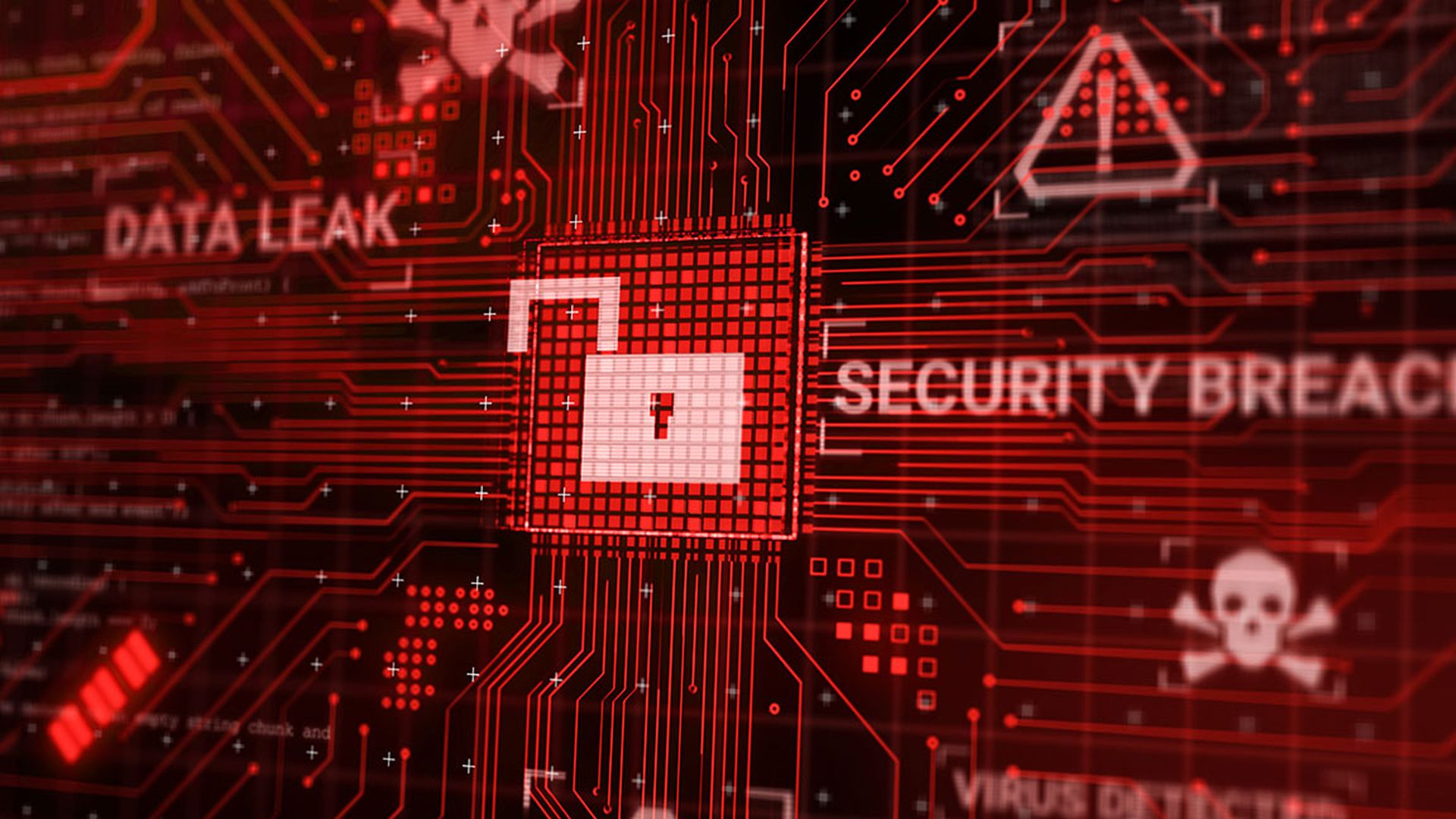“What do you know about Johnstown, Pennsylvania?”
“I know it rains.”
“Well grab your rain boots. I have a ransomware incident at Gotham Steel and I need your help.”
“Ransomware? Must be a day that ends in Y…”
Thus begins the new saga of Johnny Dollar, a fictional private detective turned insurance investigator whose old school, noir-ish, crime-fighting escapades are being reset decades into the future to tackle one of the most pressing and disruptive crimes of the digital age: digital extortion.
Yours Truly, Johnny Dollar began as a radio serial on Feb. 18, 1949. Johnny, a hard-boiled private dick in the mold of Phillip Marlowe or Sam Spade, earned his paycheck solving crimes for hire, chasing down mafiosos, murderers and fraudsters. The series ran for more than 800 episodes on CBS Radio before eventually ending in 1962.
Today, his story is being relaunched in the form of a new comic book being created by Allan Liska, an analyst at cybersecurity firm Recorded Future. Like Liska, the new Johnny Dollar will be spending his days investigating ransomware crimes and helping victims whose world has been turned upside down by ruthless gangs of criminals who use computers instead of guns to carry out their criminal schemes.
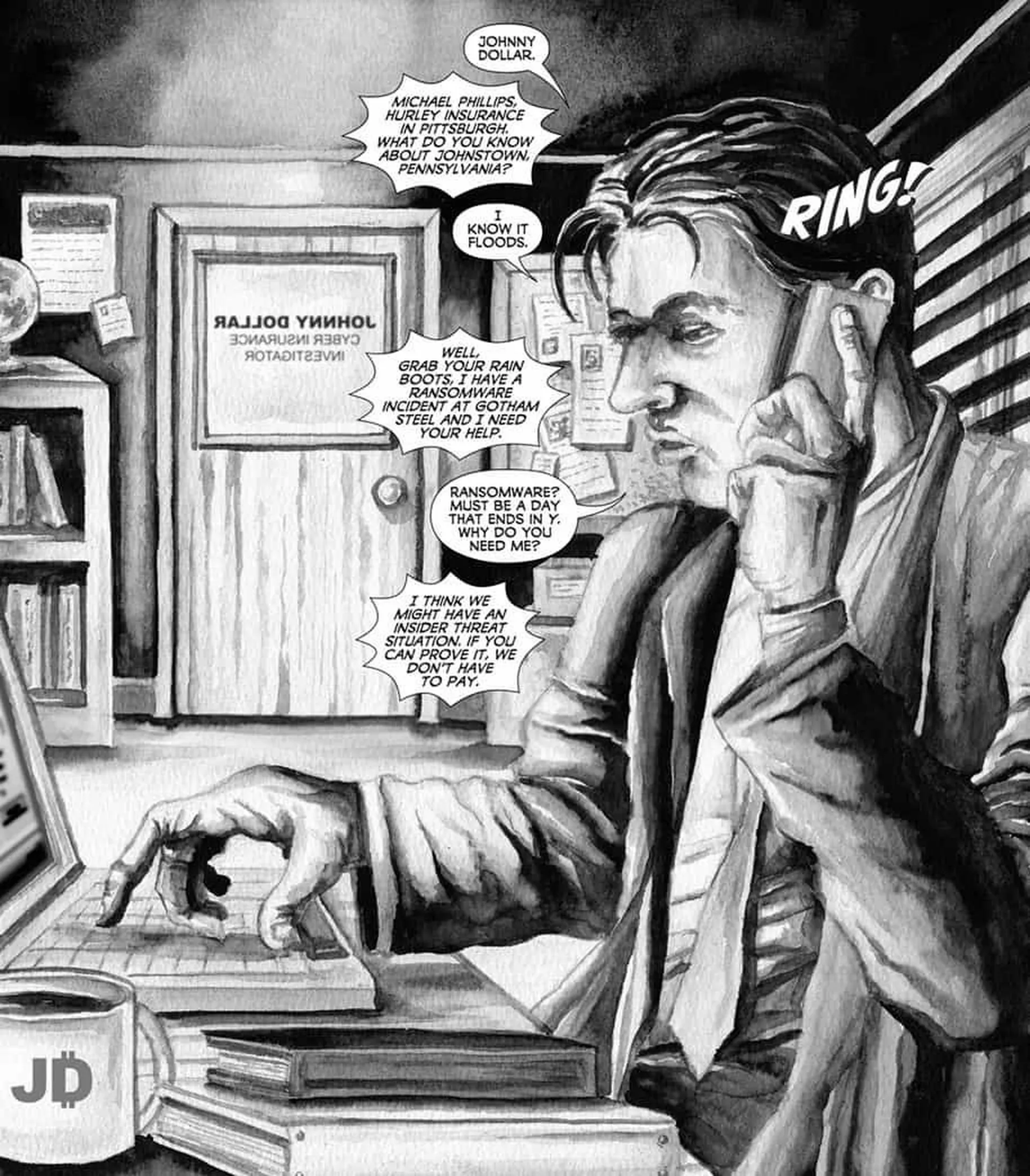
Liska – as he takes pains to point out in an interview - is not quite old enough to have caught show during its original run, but he does have fond memories of listening to old radio shows Sunday nights while studying as a high school student. He’d catch Casey Kasem’s Top 40, then switch over Superman and the Lone Ranger, but “my absolute favorite one was Johnny Dollar.”
Unlike Superman and the Lone Ranger, no one ever made a successful follow up about Johnny Dollar after it’s radio run (several short-lived efforts to make a TV show never made it past the pilot-stage), something that allowed the franchise to lapse into public domain.
That provided an opening for Liska to create a new version of Yours Truly, Johnny Dollar, this time set in modern times and focused – like his work – on the scourge of ransomware. To Liska, a huge fan of superhero comics (for years, his Twitter/X profile picture has been a shot of The Green Arrow sitting behind a green-hued computer screen), the more visual comic book format felt like a good medium for the revived franchise.
Staring into the cyber abyss
It may seem odd to translate a 1940’s detective radio serial to a comic set in the modern computer age, but Liska said part of what drew him to the project was the overlap he saw between the nihilistic worldview of the detective noir genre and his work.
Known as “the man with the action-packed expense account,” Johnny’s stories are told through individual line-item expenditures, a framing device that maps out where he’s been and how he moves his investigations forward - a concept Liska has carried over to his modern comic version.
Like Johnny Dollar, Liska's days are spent following leads and breadcrumbs to learn which ransomware actor was behind the attack, meeting with victims to determine how they got into the network, and sussing out the tools they used to carry out their crimes. One big difference: Liska’s expense account, he notes wryly, is decidedly less action-packed.
Sometimes the story plays out as a whodunnit, other times as a thriller. Sometimes the culprit is negligence, a misconfigured server that is the modern digital equivalent of leaving your window unlocked, in other cases it involves trusted insiders who sold out their companies and peers for a payday.
“To me, there are a lot of similarities between the noir detective series, movies and TV shows and where we are in cybersecurity,” said Liska, who spent his early career as a penetration tester and incident responder. “When you look at noir, there’s a lot of defeatism in it. You’re fighting against insurmountable odds, you’re taking on things that are too big, and I feel like it’s that way in cybersecurity sometimes.”
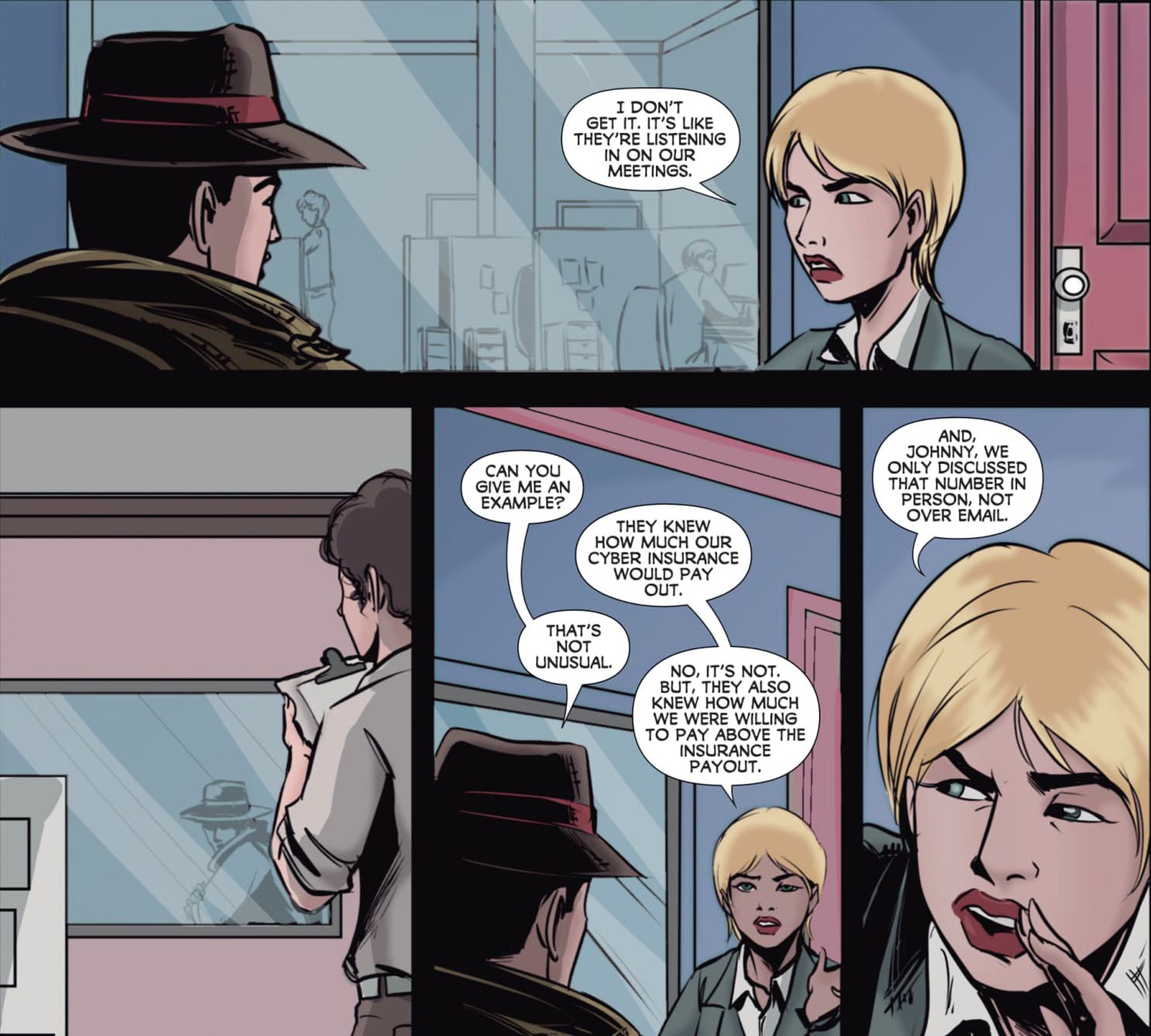
To wit, the central crime of Liska’s new creative effort is also one of the most lucrative forms of crime in the real world today, as well as one of the most difficult for law enforcement and policymakers to stop.
Today, ransomware is a multi-billion-dollar criminal enterprise, supported by a complex web of malicious hackers, malware developers, initial access brokers and other digital criminals based overseas that now cause daily disruption and financial damage to businesses and other organizations.
While a concerted push by policymakers in Washington to pursue ransomware groups and the tools they rely on more aggressively corresponded with a brief downturn in ransom payments last year, revenues have once again ballooned back up, and cryptocurrency-tracing firms like Chainalysis have said we are on track for 2023 to be the most profitable year in ransomware ever recorded.
Despite billions invested in cybersecurity defense and large-scale disruption efforts by law enforcement “it still sometimes feels like you’re fighting a losing battle," he said.
Wisdom of the crowd(funders)
After devising the idea, Liska quickly went to work putting together a small team of writers and illustrators who could help bring his vision to life. Johnny’s new story is meant to span four parts, and Liska set up a Kickstarter earlier this year, hoping to raise a modest sum - $3,500 - to fund the creation of the first issue.
Instead, dozens of contributors, many from the cybersecurity community, would up donating nearly three times that amount. It’s a testament to the desire of many practitioners, who often bemoan the way Hollywood uses loud music, flashing screens and other ridiculous tropes to depict hacking as near magic in popular media to see smarter – if still stylized - illustrations of how their world operates. Along the way, Liska gives small shoutouts to real security researchers he's worked with, naming and basing characters after them.
“There is this component of [the cybersecurity industry] where people are like ‘a ransomware fighting insurance investigator? That sounds like that could be fun,” said Liska.
That funding has given Liska and his team enough runway to fund most of their planned four-episode arc that spans some of the sectors most heavily hit by real-world ransomware gangs. Johnny will help investigate a steel mill, a water facility in Milan, a school system and a hospital, helping victims sift through the chaos and wreckage while following leads back to criminal gangs.
Translating an old radio show to a visual medium and setting it in the modern-day computer age does come with a few creative challenges. For one, the artists had to develop a visual style that both called back to the series noirish, 1940s roots while also incorporating a range of modern technologies that could feel out of step with the style.
“I absolutely love pulp artwork and old-school styles, and have really been focusing on developing that aesthetic in my own work the last several years,” Shawn Decker, an illustrator and cover artist for the project, told SC Media. “I like to think I have a style that can easily transcend time periods, especially in the context of comic book art. While I used to do traditional pen and ink work, the fully painted artwork I do these days is something that can be utilized for a modern story, but also feel right at home on something with a noir feel to it.”
It’s also tricky to craft a story about digital crime, carried out by criminal gangs who operate in faraway countries look and feel as thrilling or action-packed as the old series, where Johnny Dollar’s villains were close enough to reach out and touch – or punch. Here is one of the few areas where Liska is willing sacrifice accuracy in the name of storytelling and entertainment.
“Obviously we’re exaggerating for effect in the comic book, but generally you don’t have to use a gun or punch anybody when you’re doing ransomware investigations,” said Liska.
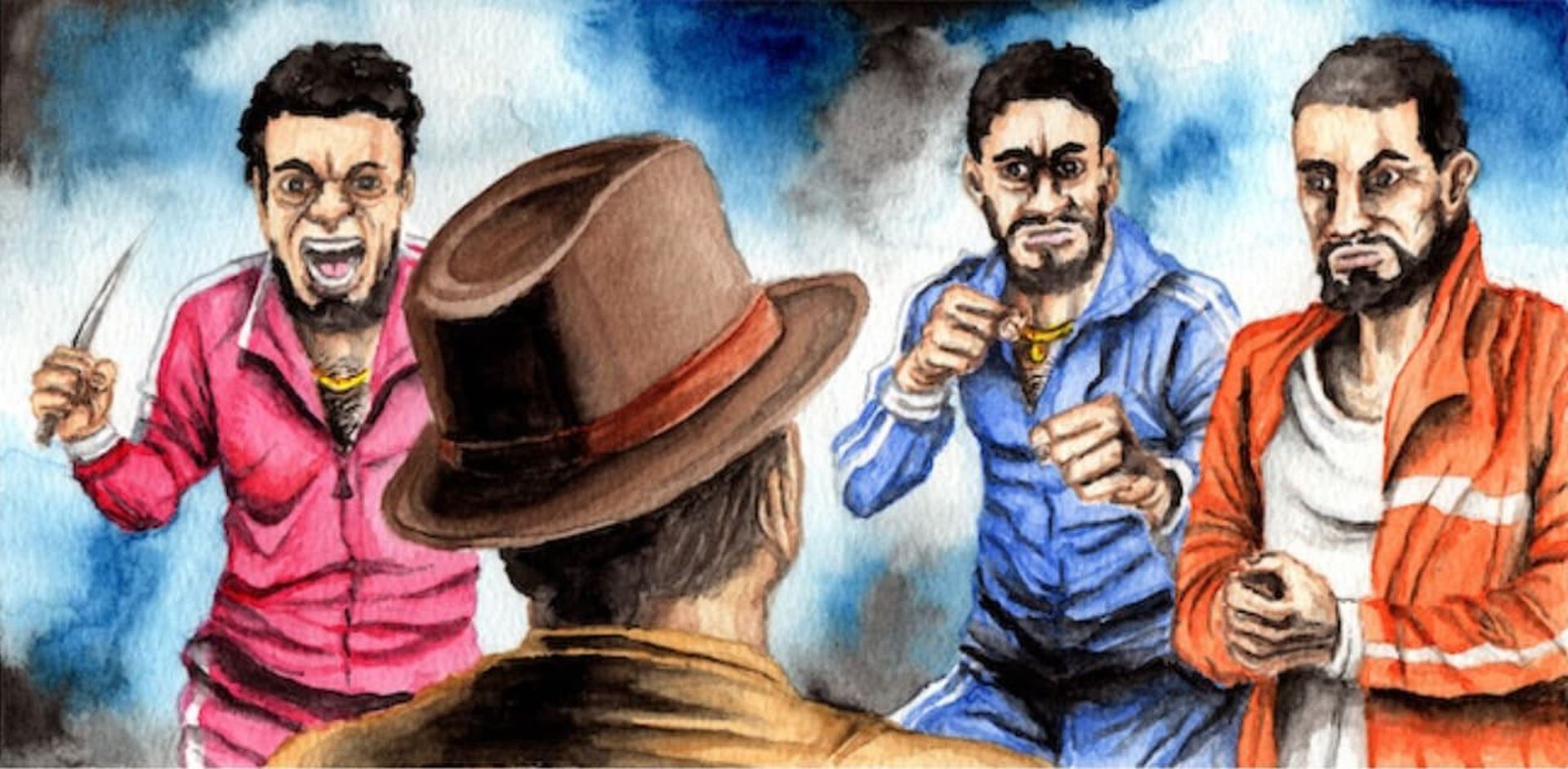
While there will be some tangible action to slake the thirst of readers, the comic intends to largely stay true to the way ransomware plays out in our world, where the impact is mostly seen and felt through the way it harms its victims and the laborious recovery process. Schools unable to hold classes, critical services like water or power halted or delayed and hospitals trying to keep patients alive while dealing with inaccessible IT systems and records.
Decker said his hope is that “even in the ‘quiet’ scenes I do involving just a pose or a desk setting, that the quality of my work and the hand-crafted nature of my traditional painting style is strong enough to be visually interesting.”
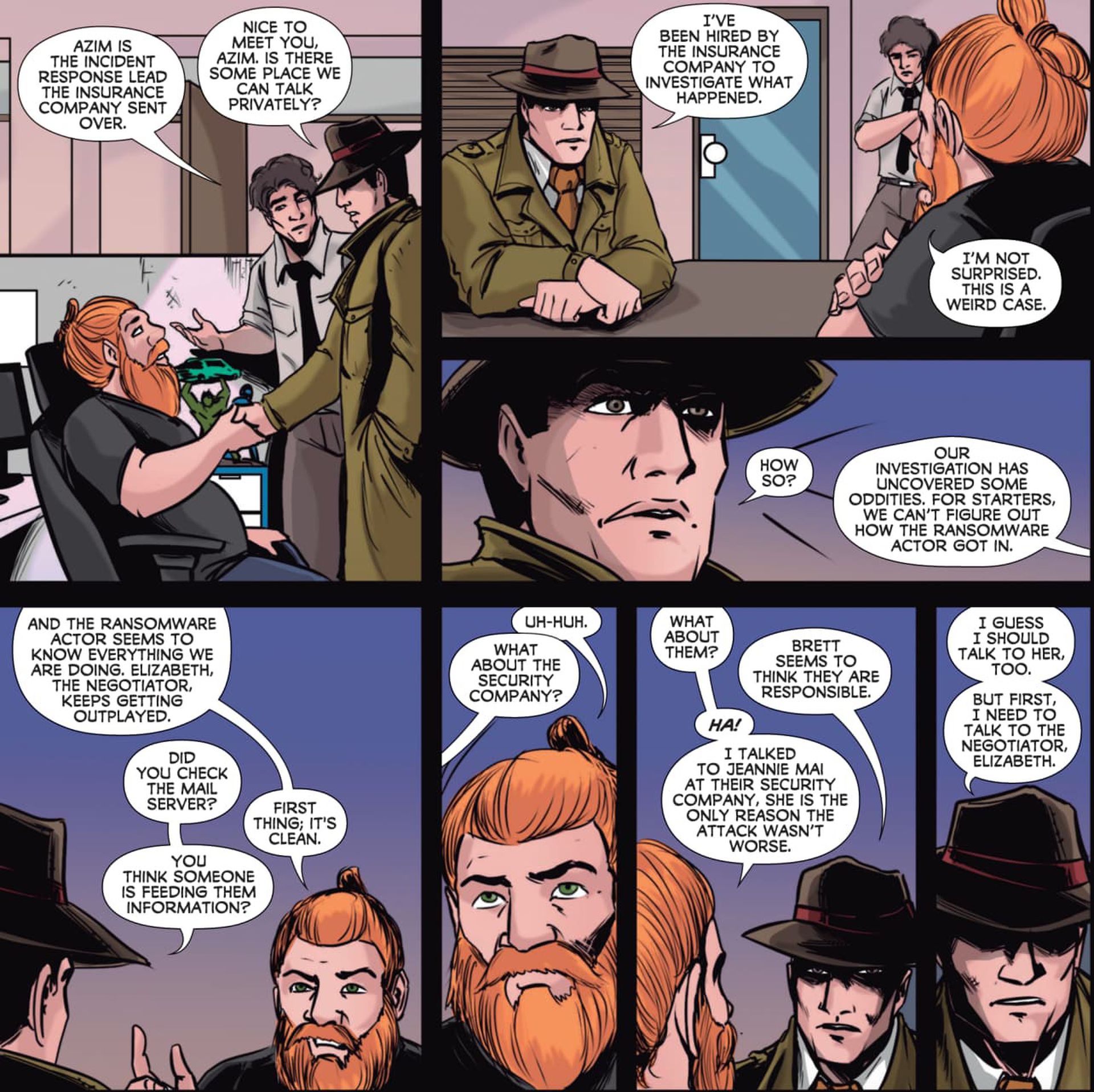
The first issue of Yours Truly, Johnny Dollar is currently estimated to come out in September. Liska said the stories will be available online and he plans to print about 150 physical copies of the first comic to distribute to funders and other parties and see where demand goes from there.
As ransomware has gone from a little-understood trend mostly noticed by security researchers to a major public policy issue that is now the subject of presidential speeches and White House summits, its depiction on TV shows and other mediums have become more and more frequent.
Despite the close-to-home subject matter, Liska said the project for him is more of a creative outlet and a form of wish-fulfillment fantasy than an effort to educate the public about the dangers or ransomware respond to the excesses and technical errors of mainstream entertainment.
“Ransomware is a TV trope and most of the time we [in the security community] roll our eyes at it, so I wanted to get a somewhat realistic portrayal, given that it’s a comic book environment and you still have to have things like Russian thugs that Johnny Dollar has to fight,” he said.



